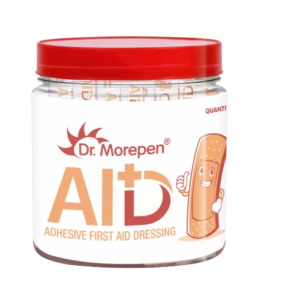Root Canal Therapy: Saving Teeth and Relieving Pain
Root Canal Therapy: Saving Teeth and Relieving Pain
The phrase “root canal” often triggers anxiety—but in reality, root canal therapy is a highly effective and virtually painless procedure that can save your natural tooth and relieve severe dental pain. Thanks to modern techniques and anesthesia, root canal treatment is as routine as getting a filling.
In this article, we’ll explain what root canal therapy is, why it’s necessary, and what you can expect from the procedure.

What Is Root Canal Therapy?
Root canal therapy (endodontic treatment) is a dental procedure used to treat infection or damage deep inside the tooth. It involves removing the infected pulp (the soft tissue inside the tooth), cleaning and disinfecting the root canals, and sealing the tooth to prevent further infection.
Despite its reputation, root canal therapy is designed to relieve pain, not cause it.
When Is a Root Canal Needed?
Root canal treatment is usually recommended when the pulp inside a tooth becomes infected, inflamed, or damaged, often due to:
Deep tooth decay
A cracked or broken tooth
Repeated dental procedures on the same tooth
Trauma to the tooth (even if no visible crack is present)
Common symptoms that may indicate a need for root canal therapy:
Persistent toothache or throbbing pain
Sensitivity to hot or cold that lingers
Swollen or tender gums near the affected tooth
Discoloration or darkening of the tooth
Pimple or abscess on the gums
The Root Canal Procedure: Step-by-Step
Root canal therapy is usually completed in one or two visits:
1. Diagnosis and Preparation
Your dentist or endodontist will take X-rays and examine the tooth. Local anesthesia is administered to ensure you’re comfortable throughout the procedure.
2. Pulp Removal
A small opening is made in the crown of the tooth to access the pulp chamber. The infected or dead pulp tissue is carefully removed.
3. Cleaning and Shaping
The root canals are cleaned, shaped, and disinfected to remove bacteria and debris.
4. Filling the Canals
The cleaned canals are filled with a rubber-like material called gutta-percha, then sealed to prevent future infection.
5. Restoration
After healing, a crown or filling is placed to restore the tooth’s strength and function.
Recovery and Aftercare
After a root canal:
Mild soreness or sensitivity is normal for a few days
Over-the-counter pain medications usually manage discomfort
Avoid chewing on the treated tooth until it’s restored with a crown
Continue regular brushing, flossing, and dental checkups
When to Call Your Dentist
Contact your dentist if you experience:
Severe pain that doesn’t subside after a few days
Swelling that worsens
Signs of an allergic reaction to medication
Loose or broken restorations
Final Thoughts
Root canal therapy is a powerful, proven way to save a tooth and stop pain in its tracks. With today’s advancements in dentistry, the procedure is faster, safer, and more comfortable than ever before.
If you’re experiencing dental pain or suspect an infection, don’t delay—early intervention can save your tooth and prevent more serious problems.
Notifications
- Celebrating Smiles and Birthdays at Dentistium Dental Clinic!Celebrating Smiles and Birthdays at Dentistium Dental Clinic! . At …
Read More "Celebrating Smiles and Birthdays at Dentistium Dental Clinic!"
- Free Dental Health Awareness & Check-up Camp at Vishwanath Saman, ShelaFree Dental Health Awareness & Check-up Camp at Vishwanath Saman, …
Read More "Free Dental Health Awareness & Check-up Camp at Vishwanath Saman, Shela"
- Empowering Our Team with Life-Saving Emergency Skills: CPR Training at Dentistium Dental ClinicEmpowering Our Team with Life-Saving Emergency Skills: CPR Training at …
Recent Posts
- Dental Implants: Procedure, Purpose & Benefits
 Dental Implants: Procedure, Purpose & Benefits When it comes to …
Dental Implants: Procedure, Purpose & Benefits When it comes to … - The Many Factors Influencing Patient Hygiene Practices
 The Many Factors Influencing Patient Hygiene Practices Maintaining proper hygiene …
The Many Factors Influencing Patient Hygiene Practices Maintaining proper hygiene …Read More "The Many Factors Influencing Patient Hygiene Practices"
- Enhance Your Smile with Dental Crowns: A Complete Guide
 Enhance Your Smile with Dental Crowns: A Complete Guide Your …
Enhance Your Smile with Dental Crowns: A Complete Guide Your …Read More "Enhance Your Smile with Dental Crowns: A Complete Guide"
- September 2025 (3)
- August 2025 (7)
- July 2025 (6)
- June 2025 (5)
- May 2025 (53)
- April 2025 (2)
- March 2025 (3)
- January 2025 (2)
- November 2024 (1)
- April 2024 (1)
36,817 hits
.
Most Searched Pharmacy products on our site
-
-
-
₹2,450.00Rated 0 out of 5
Experience powerful oral care with the PRO200V PORCLEAN Water Flosser....
-
.
.



















